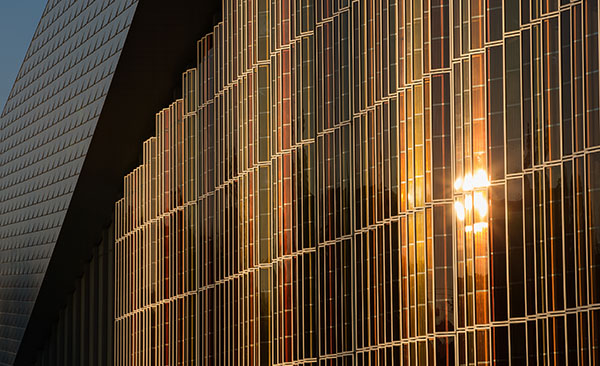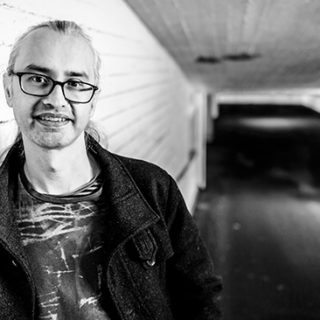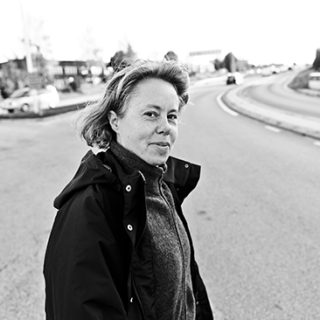Future cities to get more energy from the sun
A city without emissions from cars, boilers or heating plants. A city with cars that run silently and beautiful buildings whose roofs and façades contribute to the heating and electric power we need. This is how future cities could be, as cheap and efficient solar cells become one of our most important energy sources.
In recent years, it has become both cheaper and simpler for house owners to invest in solar cells allowing connection to the power grid to sell excess electricity or make up for any shortfall. The price of solar cells has also dropped by 80 per cent in the past six years and is expected to fall a further 60 per cent in the next few years. Recently, the Government announced that the previously raised tax on solar electrical energy for building owners who have several solar panel facilities will be reduced again in July 2017.
“That is interesting”, comments Lars Samuelson, a nanotechnology researcher at Lund University. “With lower tax, more buildings in the city can once again invest in solar panels. The best – for the concept of smart cities – is if the solar cell function can be integrated into the buildings.”
For a long time, Lars Samuelson has been working on producing cheaper and better solar cells, using nanowires which capture solar energy and generate electric current. He has developed a completely new technology for producing the nanowires themselves – or nanosticks as he prefers to call them – more efficiently, so-called aerotaxy or aerosol-based nanowire production. The method is now applied on a large scale within Sol Voltaics, a company founded by Lars Samuelson.
“With aerotaxy, we can produce nanosticks in much larger numbers in a continuous process with a growth rate a thousand times higher than previously.”
The objective is to be able to produce large solar cell surfaces with nanosticks arranged in rows in a polymer film. The researchers in Sol Voltaics have recently managed to develop a method which gets the nanosticks to line up perfectly in rows on surfaces of up to 8 inches (approximately 200 mm); during 2017 they hope to be able to produce the first large solar cell films.
“The solar cell film can then be used to cover traditional solar cell panels, thereby increasing their efficiency”, explains Lars Samuelson. Such solar cells, known as tandem solar cells, can through the combination of the nanowire film with high quality silicon panels.
According to Lars Samuelson, in the future, solar cell function will be integrated into the buildings themselves, in what is known as Building Integrated Photovoltaics (BIPV). His solar cell films are flexible and pliable, which is potentially very significant within BIPV. If it becomes possible to make them semitransparent as well, their usability will increase even further, allowing solar cell films to cover window panes on buildings.
“We have the whole chain from knowledge about fundamental quantum physics to industrial solar cell production. Now we want to go forward to see how the solar cells can be integrated in various products in our buildings and homes. If we get the funding for this, it will be a huge investment involving major stakeholders such as Skanska, IKEA and Region Skåne.”
Text Pia Romare
Facts
-
Aerosol-based nanowire production
-
Read more about how Lars Samuelson came up with the idea of how to produce nano wires using aerotaxy in:
LTH’s super-researchers pave the way for cheap solar-generated electricity
-
Semiconductors
-
Semiconductors are a group of materials which conduct electrical current quite poorly, but without stopping it completely. Modern electronics, with its computers, mobile telephones etc., is entirely based on semiconductor technology.
Semiconductor diodes are electrical components which ideally conduct electrical current in one direction only. The name diode comes from the fact that the component has two electrodes, a cathode and an anode.
-
On the integration of solar cell function in building renovation
-
When renovating building façades, it can be advantageous to build in electricity production from solar cells while improving heating insulation, ventilation with heat recovery, heating, and cooling. Åke Blomsterberg, a researcher in Energy and Building Design, is one of several researchers from Lund University in a project aiming to develop a cost-effective concept applicable on a large scale for the renovation of Swedish apartment blocks, based on a prefabricated multi-active façade element.
“The advantages and opportunities of multi-functional façade elements in striving towards a future sustainable city based on solar energy are that they could enable the achievement of cost-effective and rational energy efficiency and the integration solar energy in the renovation of apartment blocks, above all if these elements are pre-fabricated. It is not unusual for façades to require renovation, for example in the case of the buildings in the million homes programme, which present an excellent opportunity to use pre-fabricated multi-functional façade elements. In addition, this often allows the renovation to be completed without the need to evacuate residents.
The challenge of developing such elements is to be able to meet the many contradictory requirements of construction engineering combined with installation engineering in the same element.
The challenge in getting constructors to use them is that there always exists a threshold to overcome when new and untested solutions are to be launched, especially where production has barely begun. It can also be difficult to find one operator prepared to take on overall responsibility for a multifunctional element, combining construction engineering with installation engineering.”
-
Research at Lund University on Smart cities







